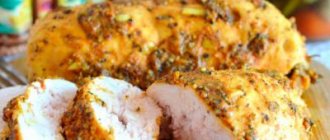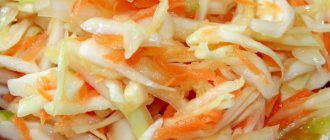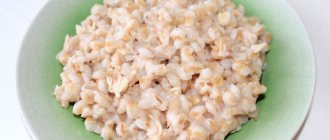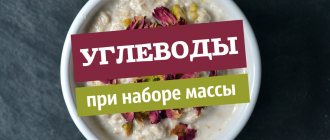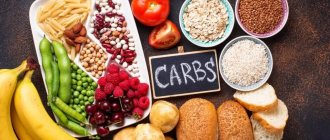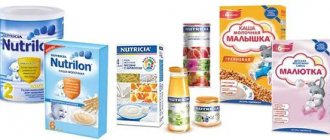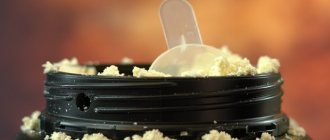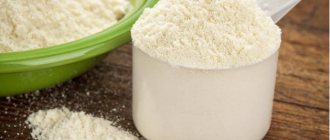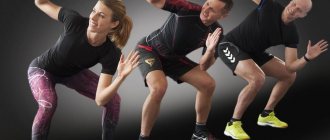What, how and in what quantity should you eat to grow muscles? How many calories and protein do you need? How different is eating to gain muscle from eating to lose weight?
The principles of proper nutrition are always the same and do not depend on the goal of losing weight or gaining muscle. Whole foods, protein, lots of vegetables, fruits, grains and healthy fats. In this sense, nutrition for muscle gain is no different from regular nutrition. There are no secret diet plans or growth-boosting supplements.
How many calories do you need to grow muscles?
Calories are just as important for muscle growth as they are for losing weight. Calories are energy. If to lose weight you need to create a calorie deficit, then to gain weight you need a surplus. From school physics we know that mass and energy cannot appear from nowhere and disappear anywhere. They can turn into each other.
But many still believe that they can build muscles out of thin air. And someone wants to burn fat and build muscle at the same time. As a result, a person simply marks time. He doesn't achieve results simply because he eats too little.
The main rule: for muscle growth you need a surplus of calories.
It should not be large - on average, it is 10% -20% above the maintenance norm. Those who are inclined to be overweight can follow the lower limit, and those who gain any weight with difficulty can follow the upper limit. If maintenance calories are 1800, then 180-360 calories are added above the norm. The final figure is 1980-2160 calories. You can start from the average figure - 39 calories per kilogram of weight, but for some it may be too much, and for others not enough. In any case, everyone will have to customize their diet to suit themselves.
Three body types
To understand how to build a training program, you must first determine your body type.
The American psychologist and physiologist Sheldon proposed to distinguish 3 types:
- Ectomorph - thin build, difficult to gain and easy to lose weight;
- Mesomorph - broad shoulders, V-shaped figure, easily gains and loses weight;
- Endomorph – wide bones, easily gains weight, especially fat, but has problems with weight loss.
His idea of separating body types became generally accepted. The easiest way to determine your body constitution is to use the so-called Solovyov index : measure the narrowest place on your wrist with a centimeter.
If your measurements:
- less than 16cm – you are an ectomorph;
- 16-18cm – you are a mesomorph;
- more than 18cm – you are an endomorph.
How much protein do you need for muscle growth?
Everyone knows about the importance of protein for muscle growth, because muscles are made of protein, right? Not really. Muscles are composed mainly of water. There are about 250 grams of pure protein per kilogram of muscle. Although protein is still the building material of muscles and should be in food. In general, you can aim for a range of 1.7 to 3.3 grams of protein per kilogram of body weight.
There are those who grow well at the lower end, and there are those who grow well at the upper end. This may depend on your body and how protein interacts with the rest of your diet. Today it is impossible to say for sure in advance.
Do you need to drink protein powder for muscle growth?
Protein powders are just another source of protein. If you get enough protein from regular food, there is no need for sports nutrition.
Protein supplements have their obvious advantages: a lot of protein per serving, good amino acid composition, no fat and carbohydrates, and few calories. As well as rapid absorption, which under some conditions is important in nutrition around a workout.
There are also disadvantages. If we do not take into account the issue of quality and fakes, then one of the main ones is poor saturation. Protein shakes do not satisfy the feeling of hunger well.
Why are protein standards so high?
You can often read that you need to eat 4-6 g/kg protein per day
But the sports nutrition industry is financially interested in selling more. And magazines are promoting this idea due to collaboration with sports nutrition manufacturers.
Secondly, bodybuilding is a sport that is no stranger to anabolic steroids. People who use go beyond the limits of physiology. They really need more protein as a building material.
In ordinary people, without enough protein, muscles do not grow, but after a certain threshold, more does too. More protein in your food does not mean more muscle. The process of synthesis of new muscle protein proceeds at its own specific speed.
A good example. Your muscles are your home. Protein amino acids from regular food or sports nutrition are the building blocks for its construction. The workers who will build are different hormones: testosterone, insulin, IGF-1, etc. Their salary is calories. There may be further options:
- If you send bricks from time to time, irregularly, construction will take a long time or stop.
- If you send more bricks than the workers are physically capable of laying in a day, the excess will remain unused (deposited as grease or burned). You can call in an additional team of workers (steroids), but it’s not worth it.
- If you don't pay wages (there are enough calories), the workers will not be motivated and construction will stop. But if you shower them with money, they still physically won’t be able to work faster after a certain limit. Thus, the excess goes into storage, into fat.
Diet: allowed foods, prohibited foods
In order to gain weight, nutritionists advise sticking to the following proportions of carbohydrates, fats and proteins (in percentage) in your daily diet: 45/30/35 or 40/25/35, respectively.
Foods that are prohibited in weight loss diets are also undesirable - they usually do not provide any benefit to the body as a whole. These are marinades, smoked foods, pickles, baked goods and white bread, fast food, snacks, chips, soda, packaged juices, margarine.
The body will benefit from proteins obtained from seafood, various types of meat, fish, poultry, and milk. As for carbohydrates, you need to pay attention to all types of cereals, fruits and vegetables. Supplementing your diet with grain bread and bran bread will benefit the body - these products not only add additional calories to the diet, but are also a source of fiber.
Among fats, you should give preference to vegetable oils - olive, sesame. Healthy fats are found in seeds, nuts, avocados, dairy products, and fatty fish.
How many carbohydrates do you need for muscle growth?
General recommendations are 4.4-6.6 grams of carbohydrates per kilogram of body weight. Here again, there are those who achieve better results on high carbohydrates, and there are those who do not tolerate large amounts of carbohydrates well.
There are two variables that influence carbohydrate intake here: training volume and insulin sensitivity.
Training Volume
Volume is the total number of approaches per workout. For example, each exercise consists of three approaches. If you have eight exercises in the program, your training volume is 24 sets.
It is very roughly calculated that for every 2 approaches the body spends 5 grams of carbohydrates. If your workout has a total of 24 sets of all exercises, the body spends 60 grams of carbohydrates on them, which must be replenished with food (24 sets * 5 g/2 sets). This figure is not a strict guide to action, but it shows that a huge amount of carbohydrates is not required to gain muscle unless a person does several dozen sets per workout.
Insulin sensitivity
Insulin sensitivity measures how well muscle cells respond to insulin and take glucose from the blood. Genetic sensitivity to insulin can vary up to 10-fold from person to person. When we talk about good genetics for bodybuilding, this is also what is meant.
So people with good insulin sensitivity can afford more carbohydrates in their diet and can more effectively store carbohydrate calories into muscle rather than fat. People with poor sensitivity should eat fewer carbohydrates. This way, they not only feel better, but also grow better, without adding a lot of fat in the process of gaining muscle.
How do you know how sensitive you are to insulin?
You can try an experiment or remember:
1. What did you notice after eating a high carbohydrate meal? It is important to choose foods without fat: muffins and sweets are not suitable. Pasta, rice, potatoes, bananas, bread are fine.
- a) muscle fullness and better relief. This may indicate good carbohydrate tolerance.
- b) heaviness, fullness and swelling. This is not good carbohydrate tolerance.
2. After eating a lot of carbohydrates, you feel:
- a) vigor, energy, burst of strength. This means you have normal levels of insulin secretion.
- b) loss of strength, drowsiness and rapid hunger after an hour. Perhaps insulin secretion is increased. This causes your blood glucose to drop sharply, making you sleepy and hungry.
Strength training increases muscle sensitivity to insulin. This is the most powerful tool we can use. But for people with poor sensitivity, carbohydrates should still be kept in moderation even during the muscle growth phase. In this case, 150 grams of carbohydrates per day may be sufficient (this is not the weight of cereals, but the weight of carbohydrates). The remaining calories come from protein and fat to normal levels.
Ectomorph is not a death sentence!
In bodybuilding, by the way, it is people with this body type who achieve good achievements, because they initially have very good proportions compared to other types.
While working as a trainer in the gym, I often used this approach when working with ectomorphic clients. This caused great surprise and joy that we achieved our goals in such a non-standard way. Therefore, I recommend that anyone who is faced with the problem of gaining muscle mass should try training in this mode for several months.
Nutrition around training
A separate issue is nutrition around training. He has a special role to play. But the importance of pre- and post-workout nutrition for muscle growth is overrated. Eating throughout the day is much more important. Muscles do not grow during training or even within an hour after. Synthesis of a new protein takes 36-72 hours.
Nutrition before and after training plays an important role if a person is training on an empty stomach or more than 4 hours have passed since the last meal. Read more about this here.
Sample menu for the week
Breakfast
Option #1
- 5 egg omelette.
- Rye bread with butter.
- Sliced cucumbers and tomatoes.
You can add greens to the omelette.
Option No. 2
- Oatmeal.
- Boiled or fried egg.
- Bread and butter.
Option #3
Oatmeal with fruits, nuts or berries.
Dinner
Option #1
- Boiled potatoes “in their jackets”.
- Stewed pork liver.
- Beans.
Option No. 2
- Pasta.
- Fish in any form.
- Vegetable Salad.
Option #3
- Cereal to choose from.
- Egg omelet or chicken with tomatoes and herbs.
Extra food
As an additional meal, you can prepare chicken broth soup or salad from available vegetables. Also, instead of snacks, the athlete’s diet includes protein and carbohydrate sources from sports nutrition.
Dinner
Option #1
- Chicken meat.
- Potato.
- Vegetable mix.
Option No. 2
- Baked fish.
- Vegetable salad with butter.
Examination by a doctor
Visit your doctor and undergo the prescribed examination. Excessive thinness (especially sudden weight loss) with a balanced diet and regular physical activity should raise alarm: something has gone wrong in the body. Reasons for weight loss include:
- endocrine system problems
- tumor development
- allergic reactions
- diseases of the gastrointestinal tract
- parasites, etc.
Timely detected and treated pathologies help restore metabolism and gain normal body weight. Consult a nutritionist to help you create a balanced diet. Perhaps a specialist will prescribe a course of vitamins and, if indicated for you, steroids.
If you are underweight, you should consult your doctor.
Table of KBZHU products for gaining muscle mass
| Product | Calorie content per 100 grams | BJU |
| 1. Salmon | 152 Kcal | Proteins – 20 g, Fats – 8 g, Carbohydrates – 0. |
| 2. Avocado | 212 Kcal | B – 2 g, F – 20 g, U – 6 g. |
| 3. Bananas | 95 Kcal | B – 1.5 g, F – 0.2 g, U – 21.8. |
| 4. Nuts | 718 Kcal | B – 7.9 g, F – 75.8 g, U – 5.2. |
| 5. Beef | 187 Kcal | B – 18 g, F – 12 g, U – 0 g. |
| 6. Black beans | 58 Kcal | B – 6 g, F – 0 g, U – 8 g. |
| 7. Yogurt | 60 Kcal | B – 4 g, F – 2 g, U – 6 g. |
| 8. Shellfish | 77 Kcal | B – 16 g, F – 1 g, U – 0 g. |
| 9. Cottage cheese | 121 Kcal | B – 17 g, F – 5 g, U – 2 g. |
| 10. Apples | 47.5 Kcal | B – 0.4 g, F – 0.4 g, U – 9.7 g. |
| 11. Lentils | 112 Kcal | B – 7.8 g, F – 0 g, U – 20 g. |
| 12. Brown rice | 110 Kcal | B – 2.6 g, F – 1 g, U – 23 g. |
| 13. Oysters | 95 Kcal | B – 14 g, F – 6 g, U – 0 g. |
| 14. Tuna | 101 Kcal | B – 23 g, F – 1 g, U – 0 g. |
| 15. Chicken fillet | 110 Kcal | B – 23 g, F – 1 g, U – 0 g. |
| 16. Egg white | 155 Kcal | B – 12.6 g, F – 10.6 g, U – 1.12 g. |
| 17. Milk | 52 Kcal | B – 2.8 g, F – 4 g, U – 5 g. |
| 18. Grapefruit | 29 Kcal | B – 0.7 g, F – 0.2 g, U – 0 g. |
| 19. Spinach | 22 Kcal | B – 2.9 g, F – 0 g, U – 2 g. |
| 20. Olive oil | 898 Kcal | B – 0 g, F – 99.8 g, U – 0 g. |
Removing water from the body
A sculpted body will never be perfectly contoured; the muscles will not cut as well if a lot of water has accumulated in the athlete’s body. Many people write that drying does not involve getting rid of water, but this is a mistake. Draining the water is the last stage of drying. And throughout the entire process, it is more convenient to monitor your progress when the body copes well with removing excess water.
How to prevent water retention? When drying, you must drink at least 2 liters of water per day (tea, coffee and juices do not count). The more you drink, the better your body removes excess water. If you don't get enough, the body will try to hold it back and you will begin to swell. Your effectiveness in training will also decrease, since a dehydrated person works less intensely.
Substances that affect fluid retention:
- Salt
- Alcohol
- Creatine
- Caffeine
- Sahara
- B vitamins
- Sweets
Recommendations
Brief recommendations for men to increase the effectiveness of fat burning:
- The reduction in caloric intake occurs gradually - 50-100 calories are removed daily until the required levels are achieved. The action will reduce the risk of failure and promote adaptation to a new diet;
- portions and number of meals are formed according to the training time, daily routine, and the peculiarities of the gastrointestinal tract. The main goal is to meet your daily calorie intake;
- studying the product composition on the label will help eliminate harmful ingredients from the menu;
- recovery is an important stage. Overtraining reduces performance and slows down weight loss;
- adherence to a daily routine - sleep stimulates the production of hormones that promote weight loss;
- drinking regime - water cleanses the body and transports nutrients;
- alcohol is contraindicated on a diet, because slows down the process of getting rid of fat;
- A systematic visit to the gym helps you move forward in achieving your cherished goal and improves the quality of your body.
Indications and contraindications
Before starting a diet, every man should familiarize himself with the contraindications that lead to deterioration of health. A sports diet is not recommended:
- for diabetes mellitus;
- men with chronic diseases of the gastrointestinal tract, liver, kidneys, heart muscle.
Indications for maintaining sports nutrition:
- reducing the percentage of body fat, preserving muscles;
- supply of necessary macronutrients without radical reduction of nutrients, as required by a low-carbohydrate diet for athletes.
The feeling of hunger is not typical for a sports diet due to the balance of the nutritional supplement, so the diet is considered comfortable and does not lead to breakdowns.
